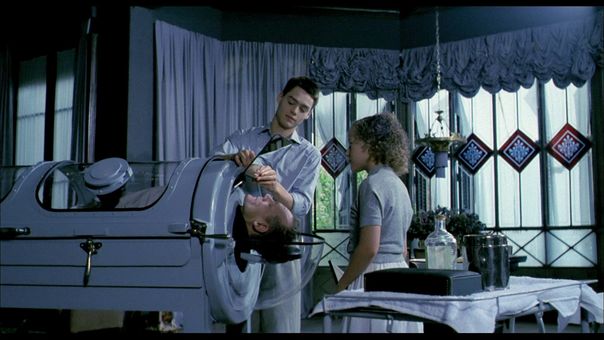The Decadence of a Substitute Body
Edgar Aldape Morales

Tras el cristal
In cinema, decadence is often a gateway to transformation, both physical and psychological. The vulnerable thread unwound as a certain ending approaches is nuanced as a definite descent toward the inevitable, the perverse, or the joyful, often condemned by the return to the past, the terror of cruelty, and a dreamlike sense of attraction to horror and sin. IN A GLASS CAGE (1986), Agustí Villaronga’s first feature film, constructs a spiral of delirium which, as one of the characters says, finds fascination in horror and the mask which (in reference to sociologist Erving Goffman) peeks out from beneath the dramatic façade, in certain contexts not even attempting to conceal its essence.
In the apparent revenge game perpetrated by Angelo, the victim of Klaus, a concentration camp doctor who breathes with the help of an iron lung, decadence is personified here in an expressionist mise-en-scène based on a chromatic mosaic that displays the evolution of the characters in their roles as victims and victimizers. The mansion where the action unfolds replaces the fenced off meadows of the concentration camps, but it maintains the oppressive weight of those places. Curiously enough, the only breath of freedom is not outside, but in the somatic voyeurism to which the characters are submitted. With that, decadence invades beneath a mist from out of which the figure of Angelo emerges, like the double substitute of horror and sexual desire, helplessness and cruelty.
(translated by Gregory Dechant)

